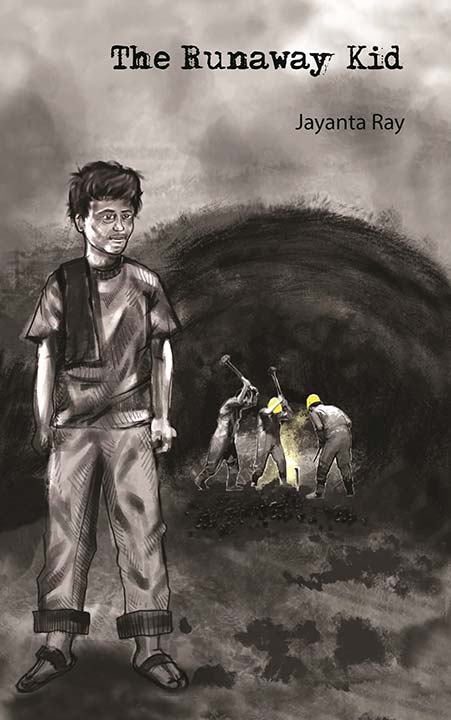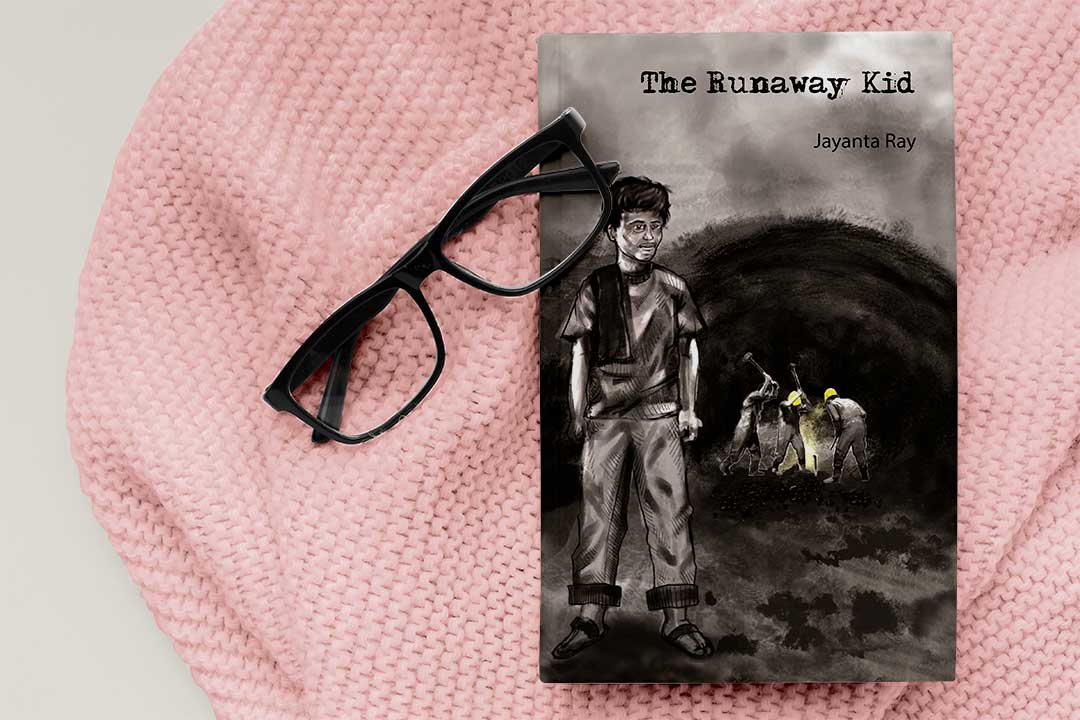Title: The Runaway Kid
Author: Jayanta Ray
Publisher: Book Street Publications
Genre: Crime Mystery, Social Realism
First Publication: 2023
Language: English
Book Summary: The Runaway Kid by Jayanta Ray
The novella is set in early 70s in a little known village in Bihar, where exploitations, both sexual and bonded labour, were rampant. The administration chose to turn a blind eye to these aberrations. With the existing socio-cultural milieu, the novella looks at the realistic environment through an oculus of the chief protagonist, Bhola, who after delivering a body blow to his mother’s tormentor runs away from one place to another in search of a safe haven so as to escape the long hand of law till he meets his destiny.
Though being a teenager, his mentors guide him to grow beyond his biological age and liberate the suffering populace eking out a miserable life in dystopian conditions. Human miseries and agony occupy a major space in the narrative. Appalled by the existing conditions, he takes up the cudgels on behalf of the unfortunate masses, which became the bane of his life.
From witnessing his mother being violated by the landlord, to providing companionship to a woman with unconventional desires, Bhola’s journey enlightens the readers about the humanistic relationship between Bhola and the other characters of the novella that finds expressions through various social issues, besides, of course, his biological parents. Like all good things, the novella comes in a small size and not a voluminous one; it is hoped that readers would enjoy reading it because of its realistic style of storytelling.
Book Review: The Runaway Kid by Jayanta Ray
Social realism is a type of literary genre that portrays the challenges and difficulties of life through a realistic lens. It is a literary movement that emerged during the 19th century and aimed to shed light on social injustices and the plight of the working class. Works of social realism are characterized by their depiction of the grim and often brutal aspects of life, as well as their focus on the lives of ordinary people. The genre often deals with themes such as poverty, oppression, and inequality, and portrays the struggles of marginalized groups in society. Through its realistic style of storytelling, social realism provides a powerful commentary on the state of society and serves as a means of highlighting the need for social change.
Jayanta Ray’s The Runaway Kid is a brilliant example of social realism literature. It presents a vivid picture of the socio-economic and political landscape of the time and offers a scathing critique of the apathetic attitude of those in power. The Runaway Kid offers a raw and unflinching portrayal of the harsh realities of life, including sexual exploitation, bonded labor, and tragic accidents in mines. By shining a light on these issues, the novella highlights the importance of empathy, social justice, and the power of collective action.
The Runaway Kid vividly depicts the difficulties of growing up in 1970s rural Bihar. Bhola, the main protagonist of the story, is a young boy who is forced to leave his home after getting into a violent confrontation with a local thug who had been tormenting his mother. As Bhola makes his way from one location to the next on his journey, he is constantly trying to stay one step ahead of the law and find a secure place to call home.
As Bhola grows older, he becomes more aware of the injustices around him and the exploitation of the poor and vulnerable. With the guidance of his mentors, Lala and Ajoy, he becomes an advocate for the downtrodden and works to improve their living conditions. Through his actions and words, Bhola shows that it is possible to stand up against oppression and make a difference in the lives of those who are suffering.
One of the most poignant aspects of the novella is the way in which the author portrays the realities of life in a mining town in Bihar. Through vivid descriptions of the mines and the dangerous conditions in which the workers must toil, the reader is able to gain a sense of the harshness and brutality of life in this place. The author does not shy away from the tragedy and loss of life that are all-too-frequent occurrences in the mines, and this adds a sense of urgency to Bhola’s quest for justice and equality.
Another notable aspect of the book is the way in which the author uses metaphor and symbolism to convey the themes of hope and aspiration. The rainbow, in particular, serves as a powerful symbol of the potential for change and progress. Despite the bleakness of the world around them, Bhola and his companions are able to find meaning and purpose through their efforts to improve the lives of others. This is a powerful reminder that even in the darkest of times, there is always the possibility of a brighter future.
The novella also deals with the sensitive issue of the exploitation of bonded laborers by the powers-that-be. Bhola’s own journey is marked by several experiences that test his mettle, including him companionship to a woman with unconventional desires. However, through it all, Bhola learns to bond with other “have-nots” and provide balm to one another in the face of unimaginable adversity.
In addition to its strong themes and symbolism, the novella also features well-drawn characters who are complex and multi-dimensional. Bhola, in particular, is a compelling protagonist whose struggles and triumphs are portrayed with great sensitivity and nuance. Through his interactions with Lala and Ajoy, as well as with other characters in the story, Bhola is able to grow and develop as a person, gaining a deeper understanding of the world around him and his place in it.
Overall, The Runaway Kid is a powerful and thought-provoking work of fiction that offers a searing indictment of the injustices and inequalities that are all too common in our world. Through its vivid descriptions, well-drawn characters, and strong themes of hope and resilience, the novella is able to capture the reader’s imagination and leave a lasting impression. Highly recommended for anyone looking for a powerful and engaging read that speaks to the human condition.






